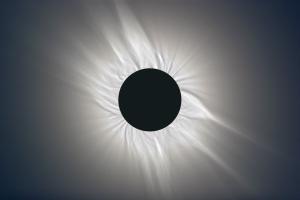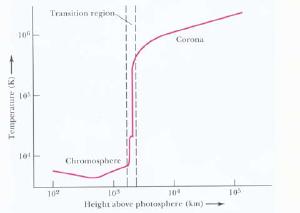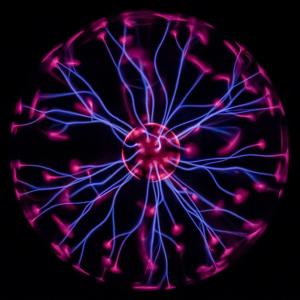Blog
Hot Topic
7 July 2014
 Koen van Gorp
Koen van GorpThe structure of the Sun can be divided into three main parts: the interior, which consists of the core, radiative and convective regions; the photosphere, which is basically the surface of the Sun where light comes from; and the atmosphere, of which includes the corona. Since nuclear fusion occurs in the core of the Sun, it’s reasonable to assume that the core is the hottest part of the Sun. In fact we know the core is about 15 million K, and that as you move outward from the center the temperature drops, until you reach a temperature of about 5,800 K at the surface. One would expect that this cooling trend continues, so that the solar atmosphere is cooler than the surface. But what we observe is that the atmosphere, specifically the corona, gets hotter. Much hotter.
 Nicholas M. Short
Nicholas M. ShortWe know that the corona is hotter than the photosphere from observations of spectral lines in sunlight. Most of the lines we observe in sunlight are absorption lines, typically known as Fraunhofer lines. These are due to the cooler region of solar atmosphere just above the surface, which absorbs sunlight at particular frequencies. But we can also observe emission lines from the corona itself. Since the pattern of the bright line spectra is affected by temperature, we have a pretty good measure of coronal temperature. What we find is there is a transition zone where the temperature jumps from under 10,000 K to over a million Kelvin. In some regions the temperature can be as high as 20 million Kelvin, which is hotter than the solar core.
Although parts of the corona are hotter than the Sun’s core, the corona is also very diffuse. It’s density is a trillionth that of the upper photosphere. It is so diffuse that it gives off very little light and energy compared to the Sun proper. Although the corona has been studied since the 1800s, it was only around 1930 that clear spectral lines could be measured from the corona. It is around this time that we first realized just how hot the corona is. Ever since then there has been an effort to understand this mystery.
We know at least in part of the corona’s heating comes from magnetic recombination. Because of the differential rotation of the Sun, magnetic field lines tend to get wrapped around the Sun until they eventually snap back into alignment. This magnetic snapping (known as reconnection) releases energy similar to a rubber band snapping back after being stretched. Since the magnetic fields snap within the corona, they give the corona a bit of energy. Another idea is that a plasma interaction known as Alfvén waves contributes energy. Alfvén waves are low frequency waves within a plasma that are powered by magnetic interactions. Recent studies have shown that Alfvén waves interacting with solar jets known as spicules might provide enough energy to heat the corona to observed levels. The key word here is might.
Most astrophysicists view the solar corona problem as a matter of the devil in the details. Between magnetic reconnection, Alfvén waves, and other near-surface activity there are plenty of energy sources to heat the corona. It is just a matter of gathering enough evidence to conclusively demonstrate which particular mechanisms are the primary contributors. It is viewed as a minor annoyance rather than a fundamental hole in our current understanding. There are some, however, who view the corona problem as evidence of a fundamental flaw in mainstream astrophysics. For them, coronal heating can only be resolved by a fundamental revolution in cosmology. This approach is known as the electric Sun.
 Wikipedia user Colin
Wikipedia user ColinIn the electric Sun model, the Sun is electrically charged. Typically it is presumed that the Sun has a positive charge on the order of several billion volts. The interstellar plasma in the region of the Sun are then induced to flow in Birkeland currents, where negatively charged electrons flow into the Sun, and positively charged ions flow away from the Sun. Birkeland currents are the mechanism behind aurora on Earth (though not because the Earth is electrically charged), so the idea is that a similar effect could power the Sun. Since in this model the Sun is powered from the outside rather than the inside, naturally the external corona is hotter than the interior.
Like the vast majority of astrophysicists, I don’t find the electric Sun model very compelling, largely because it simply doesn’t agree with basic observational results in areas such as solar neutrino flux, solar wind properties, and other areas of plasma astrophysics. Of course electric Sun proponents will argue that it most definitely does agree with observation, and go on to extend the model into plasma cosmology and electric universe models, where phenomena such as black holes, the big bang and cosmic expansion are disputed.
I guess you could say it’s a hot topic.
Tomorrow: dark matter makes up most of the matter in the universe, but we don’t know what it is.